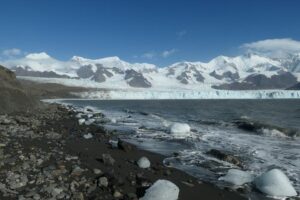
Global travel and trade are making it easier and easier for invasive species to make their way to new parts of the world, including places where little to no life was once visible.
In a new paper in NeoBiota, with first author Peter Tichit, researchers document how life forms introduced by whalers and sealers in the 19th and early 20th century are now thriving on once glacier-covered landscapes.
As the Nordenskjold Glacier retreats on the remote antarctic island of South Georgia, newly uncovered stretches of ground are revealed. Since this is an ongoing process, there are regions that were laid bare longer ago, regions that were just revealed, and everything in between. By looking at the density of life across all these different regions, researchers were able to piece together how invasive plants and animals fill these newly created landscapes. As they describe in their press release, “Just a few years after bare ground is exposed by glacier melting, pioneer plants arrive, progressively covering more ground with time and followed by an increasing number of species.”
Included in the mix were plants native to the northern hemisphere, including meadow grass and mouse-ear chickweed. These plants are literally filling in the landscape where no plant had gone before.
It is impossible to know what the world will look like when the glaciers are gone, but this study makes it clear that life will find a way to fill every niche in the new ecosystems.
